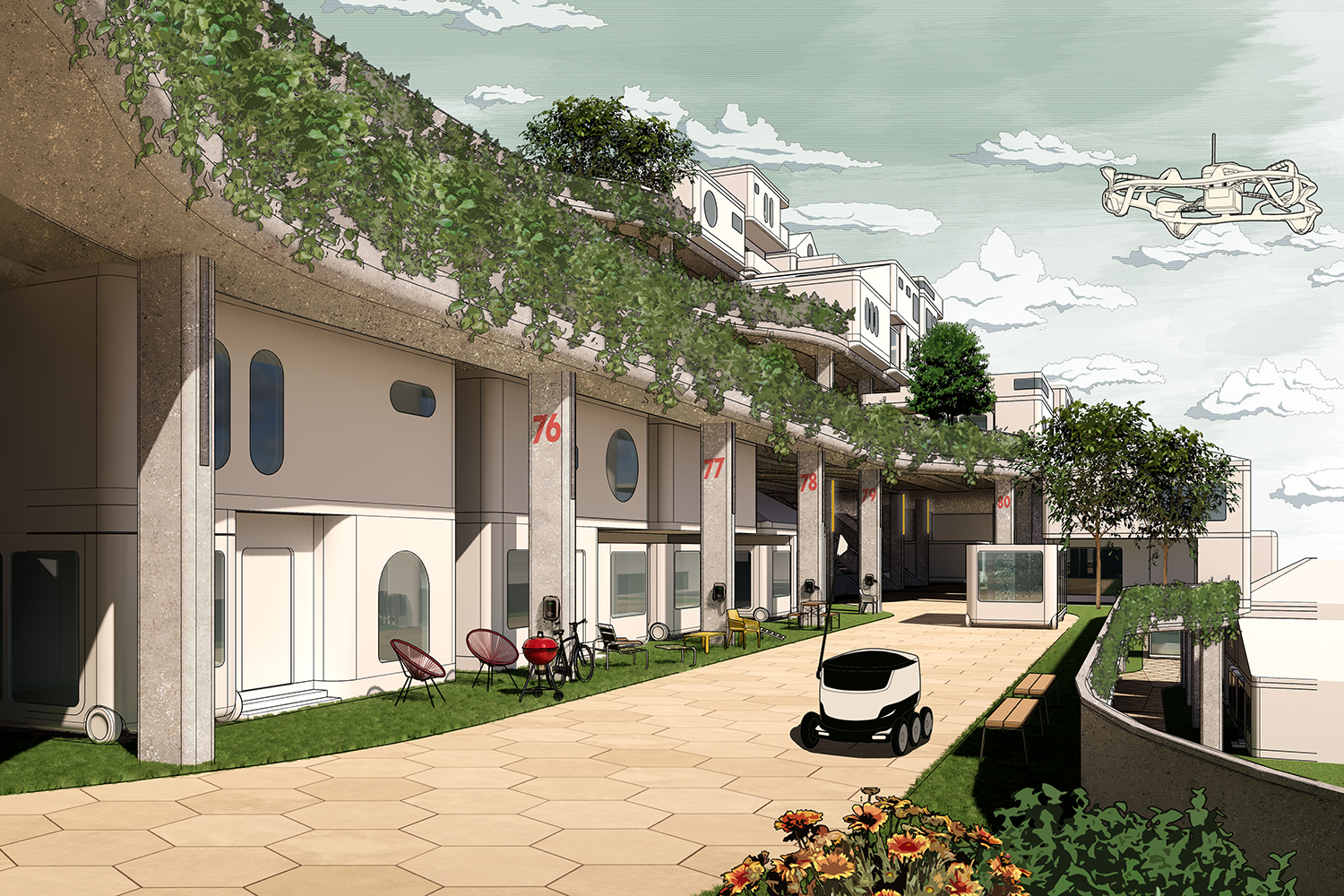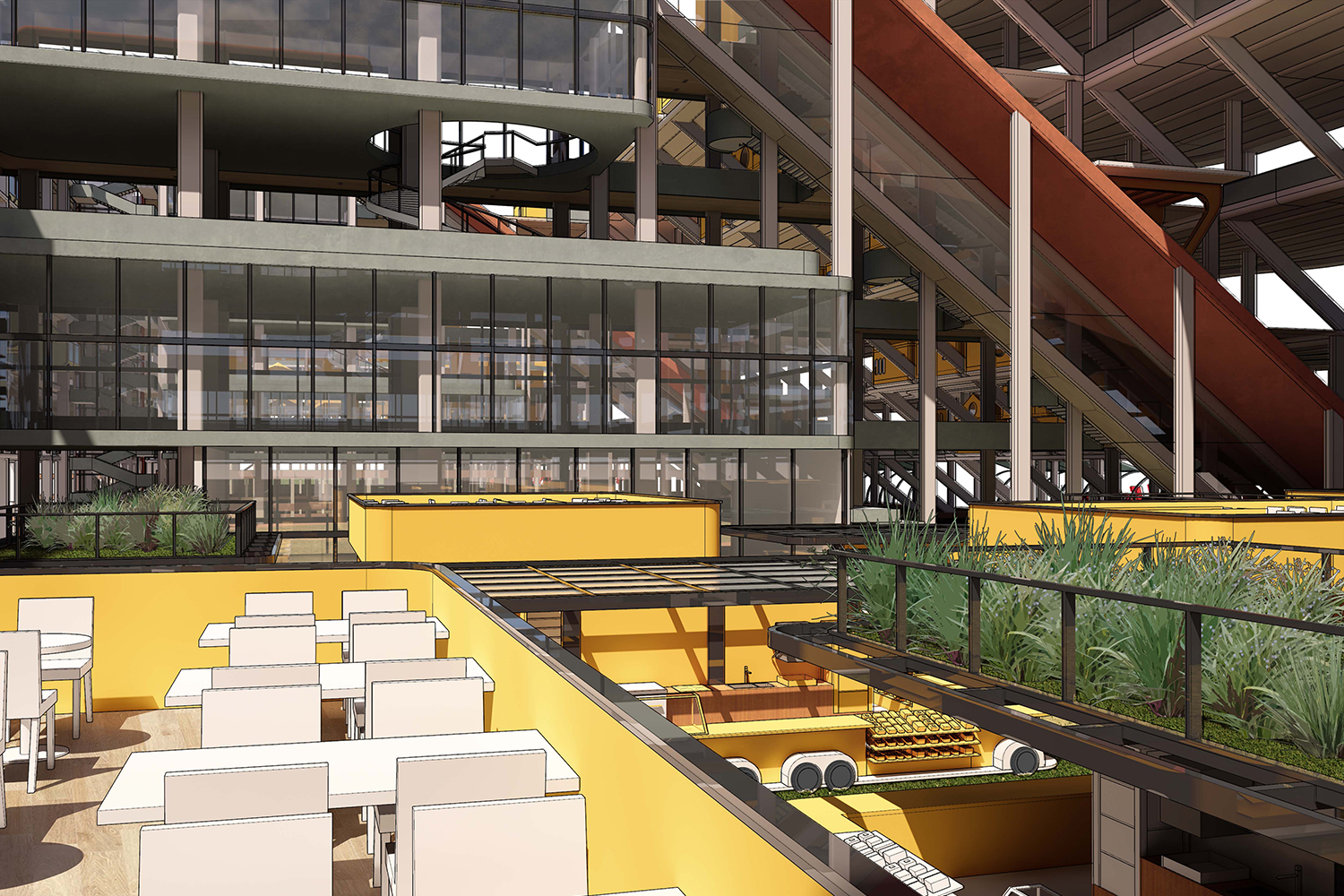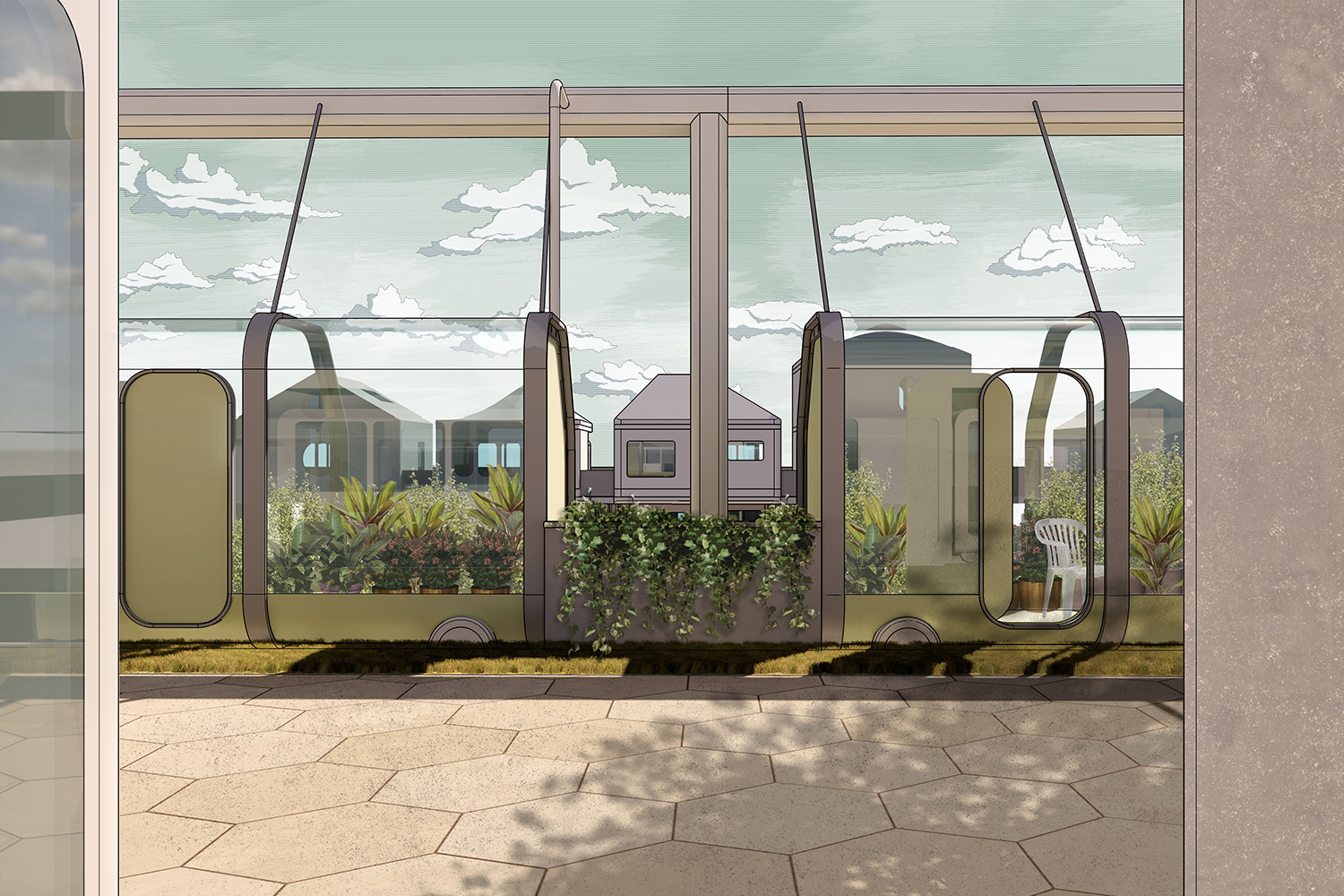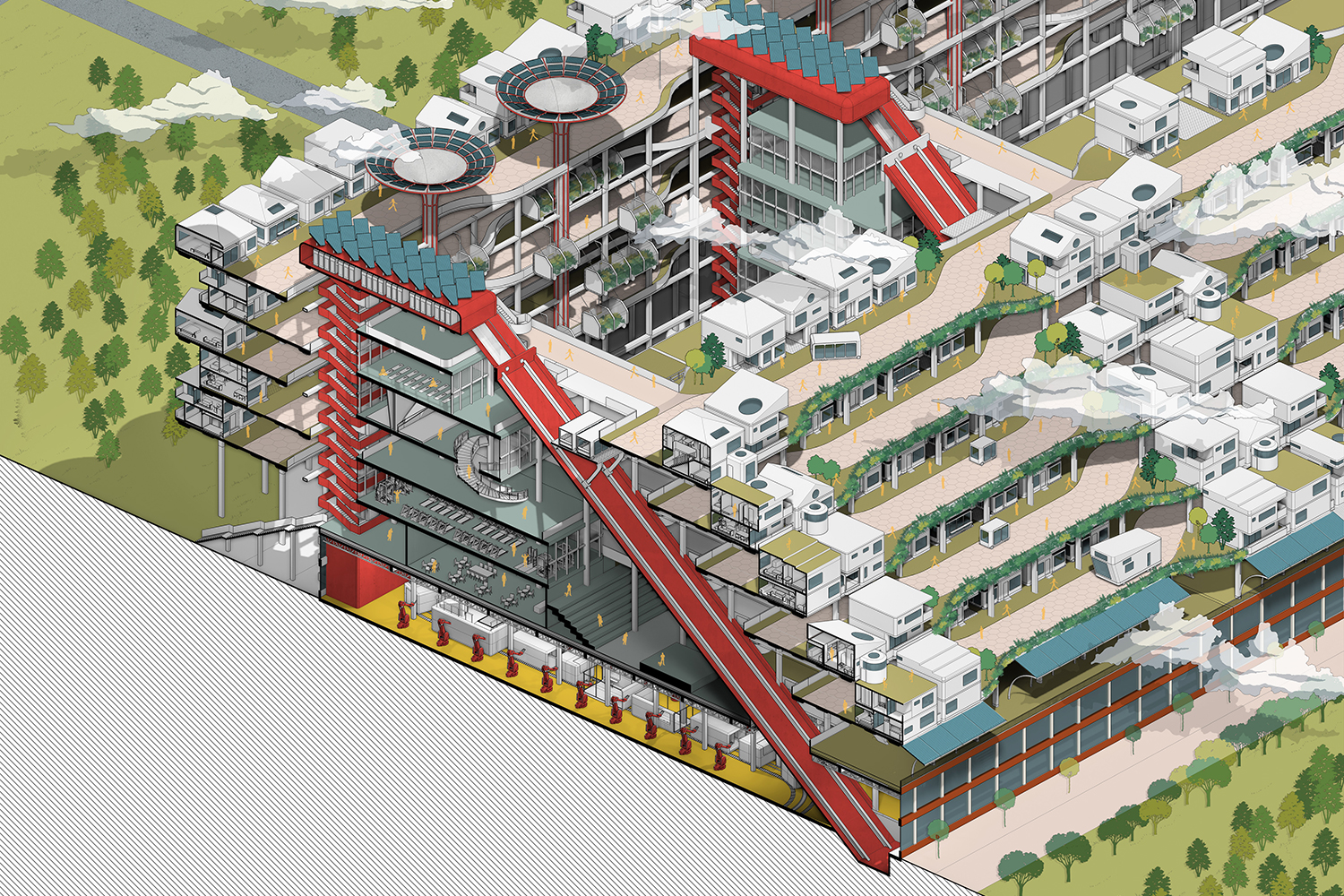Lester Lim Hai Heng
Singapore University of Technology and Design
Singapore
The advent of autonomous electric vehicles in the near future will make the nature of mobile vehicles increasingly nebulous: what will be the difference between your living room and your car? This project posits that there will in fact be no difference – with the production and inhabitation of vehicles and homes mixed and no longer distinguished. This future implies a drastic change to our car-obsessed urban environment, promising not only as a more freely mobile future, but also one which permits us to redefine the sustainability of car culture and the suburban lifestyle.
This project thus questions if the new form of mobility explained earlier on can stitch spaces back together? It is mainly inspired by the idea of Woonerfs in the Netherlands, which translates to Living streets, where suburban neighbourhoods are far denser and sustainable, with common front yards and shared spaces for humans and vehicles to inhabit. This is crucial due to the fact that in typical metropolitan developments, vast amounts of building area are set aside for parking requirements, creating large, banal spaces that often feel dangerous and uninhabitable.
The resulting form is a terracing groundscraper structure that seeks to take back the streets for the people in this industrial wasteland, along with attempting to establish a vertical suburban form instead of resorting to skyscrapers, which are often criticised as alienating people from street life and the city.
It also challenges the boundary between cities and suburbs, by re-introducing this suburban concept into Detroit’s wider metropolitan area. This strategy draws the suburban population back into the city, as a counter thesis to the suburban sprawl growth model the American typically adopts for housing.




